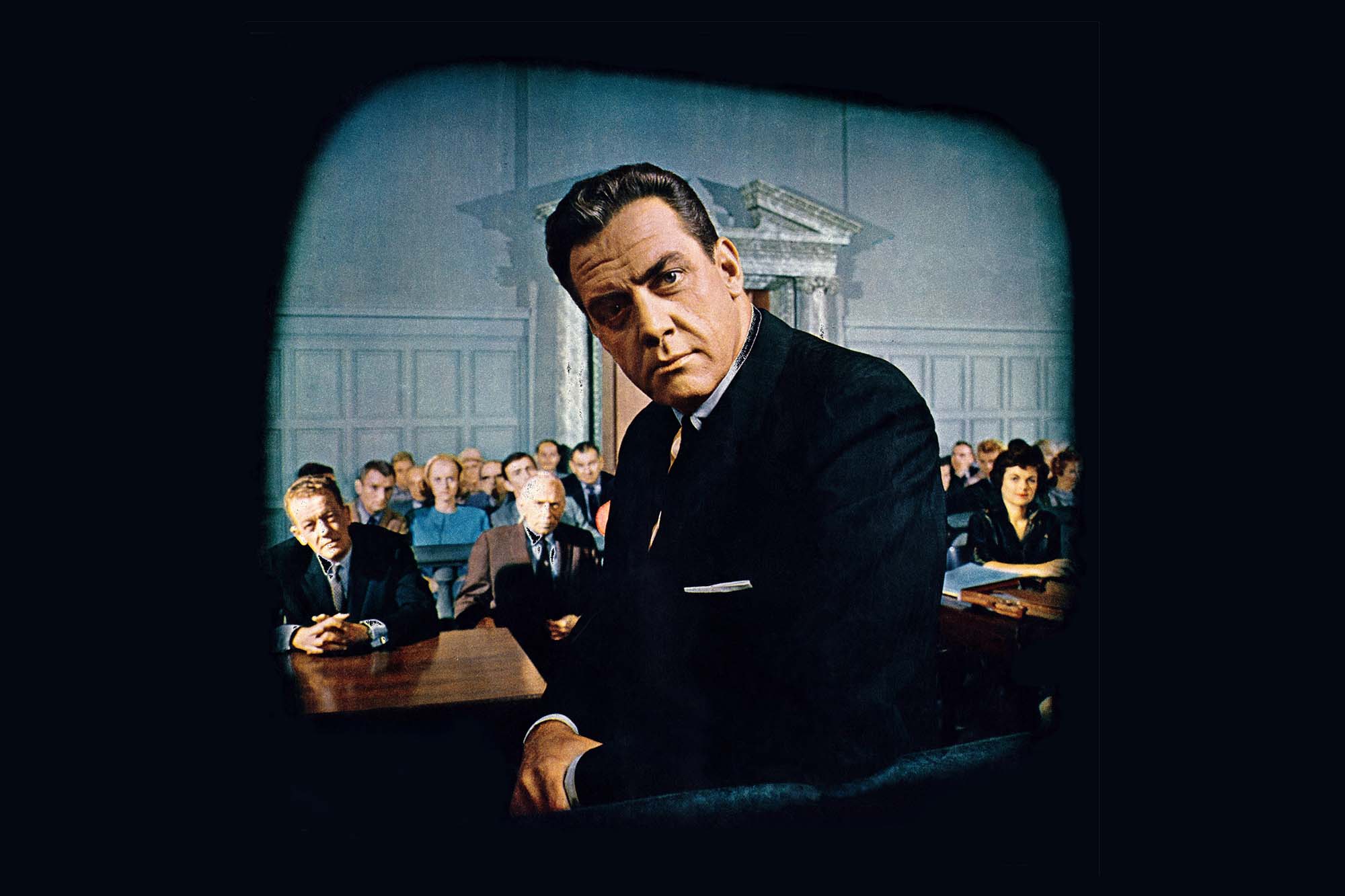by Jacqui Shine
Vol. 105 No. 2 (2021) | Judicial Independence | Download PDF Version of Article
When it premiered on CBS in 1957, Perry Mason represented the birth of the television courtroom procedural. For decades, Mason, a criminal defense attorney who almost always emerged from the court victorious, was America’s most loved lawyer. The character has been cited in more than 250 judicial opinions. When Huey P. Newton was charged with murder in 1968, a Black Panther lieutenant reportedly asked a potential attorney, “Are you as good as Perry Mason?”
Perry Mason is in the DNA of nearly every legal show produced since its debut. The show was the first to make heroes of investigators and defense attorneys, established a longstanding two-act structure, and defined conventions like the unexpected confession in a dramatic cross-examination.
The enduring popularity of these tropes and the embrace of the character, however, masks a more complicated legacy. The show depicted a legal system that worked only for the innocent and the wrongfully accused, a paradigm that fed broader misperceptions about the infallibility of the judicial system. In Perry Mason’s world, justice was neatly served in the end.
The hourlong CBS series was the most successful gambit of a multimedia franchise that began in the 1930s. Raymond Burr was Perry Mason. The towering, broad-shouldered Navy veteran cut an imposing figure, his piercing gaze telegraphing trustworthiness and quiet intelligence as he charmed his way into the confidences of doubtful witnesses. A parade of guest stars included Robert Redford, Bette Davis, Angie Dickinson, and Burt Reynolds.
The plotting is simple. In the wake of a violent crime, Mason agrees to defend the wrongly accused. In the first half of the episode, he reinvestigates the crime. In the second, a courtroom scene peaks in a dramatic confrontation in which Mason exonerates his client and reveals the real offender.
Mason has no allegiance to the police or to the state. Unafraid to skirt the law, he pursues leads and theories his police counterparts have failed to see. Mason, unencumbered by procedural restraints, is smarter and nimbler. The district attorney, no match for Mason, merely lodges vigorous objections to his opponent’s theatrics or sputters with outrage.
Over 300 episodes, Perry Mason never loses — or, more accurately, never fails. In “The Deadly Verdict” (1963), Mason exonerates a client who had been sentenced to death. Mason’s victories are almost always moral, rather than legal — with one exception. On the sole occasion he does represent a guilty client, he secures a mistrial, a technical success presumably less offensive to his moral code.
The show is set in Los Angeles, a city that saw serious racial conflicts in the years Perry Mason aired: a major racial discrimination lawsuit against the L.A. Unified School District; ongoing housing discrimination; and, in 1965, six days of civil unrest as residents of the segregated Watts neighborhood rebelled against years of police brutality.
Yet the social and political tumult of Southern California never intrudes on Mason’s world, which is almost exclusively white. Mason never defends a Black client. Black actors appear in bit parts and uncredited roles. 1963’s “The Case of the Skeleton’s Closet” attracted controversy because the trial judge, who has no lines, was a Black man.
This was the limit for portraying race relations, and producers considered it adequate. According to The Baltimore Sun obituary for Burr, the actor once said in an interview that longtime viewers, “particularly the minorities, they found out the system of justice was for them.”
We know it wasn’t. In avoiding racism in the legal system, and in reinforcing the assumption that only the guilty are convicted (while the white wrongly accused walk free), Perry Mason presented a distorted view of the world to its overwhelmingly white audiences — one that normalized injustice.
The trope of the defense attorney as arbiter of moral justice may be the show’s most enduring influence. On countless crime dramas, defense attorneys are contemptible unless they serve the wrongly accused; take on the noble but impossible role of the public defender; or take no satisfaction in their success. The attorney who “gets a client off on a technicality” is lucky or devious: Procedure only obstructs justice. The attorneys of the late-’90s/early 2000s drama The Practice, for instance, are tortured by ambivalence, their sense of justice proportional to the likeability of their client.
In TV land, defense attorneys who aren’t in it to protect the innocent can’t succeed, even when they win.
This is article is adapted from a piece originally published by Smithsonian magazine.